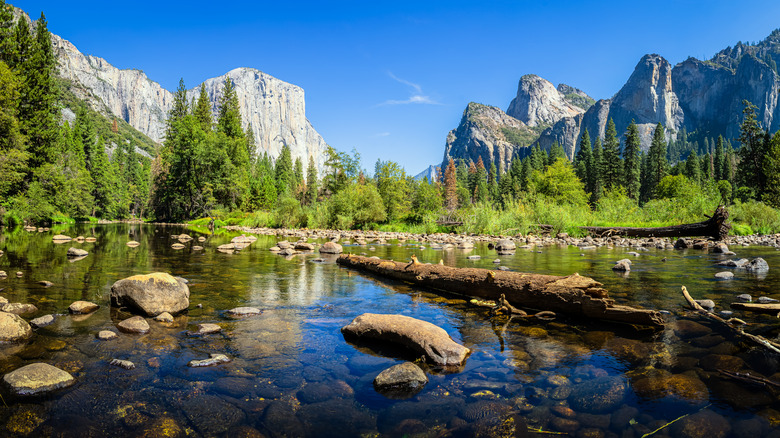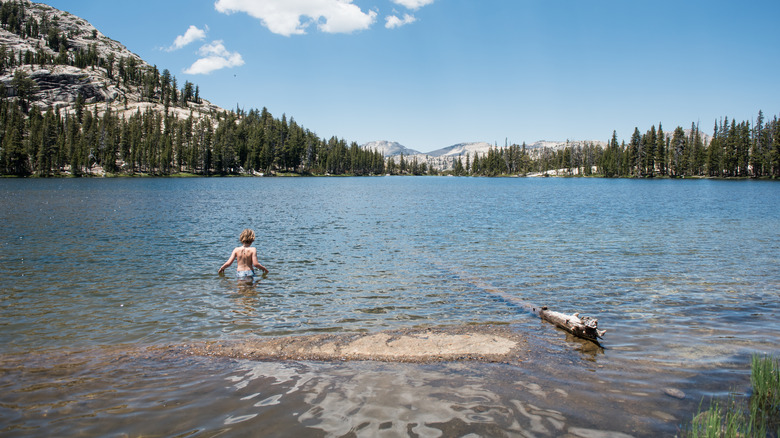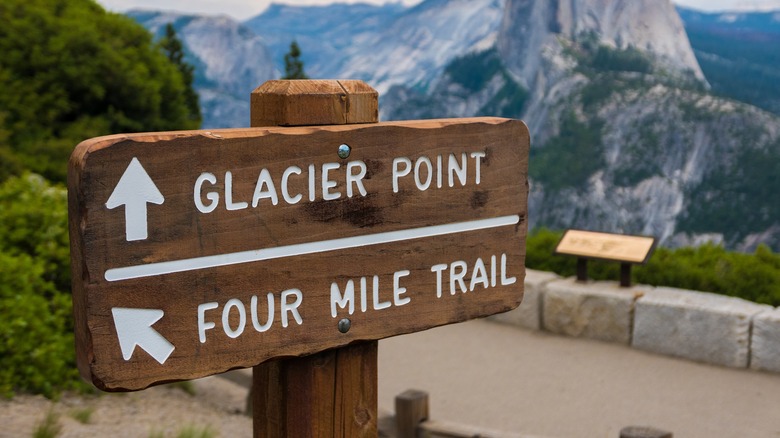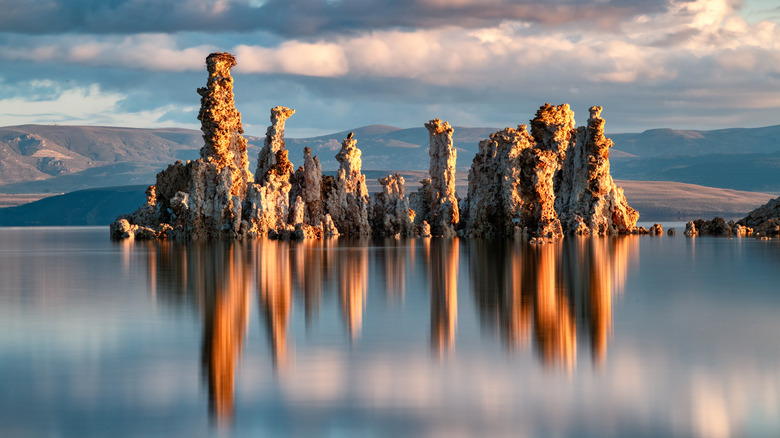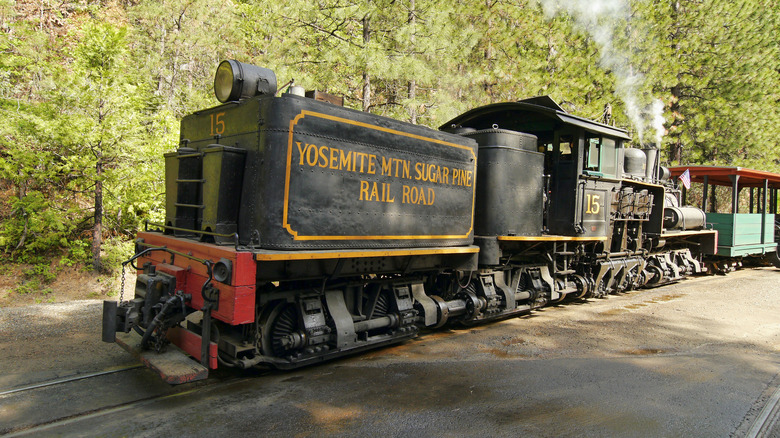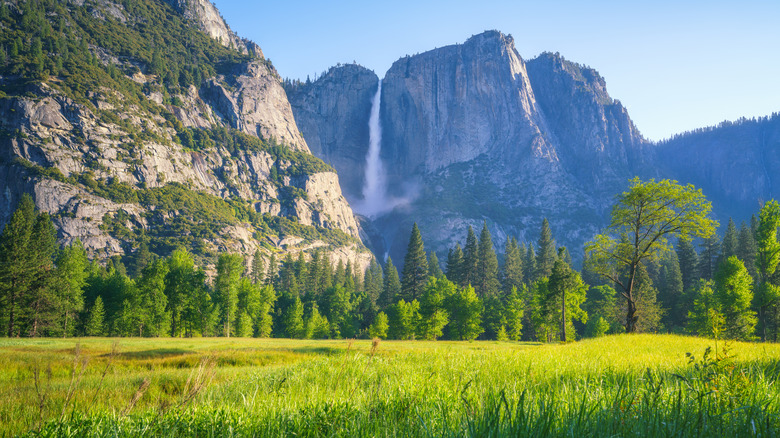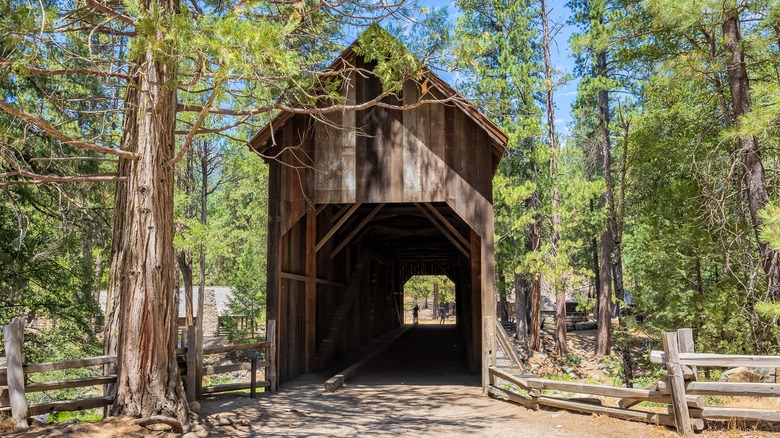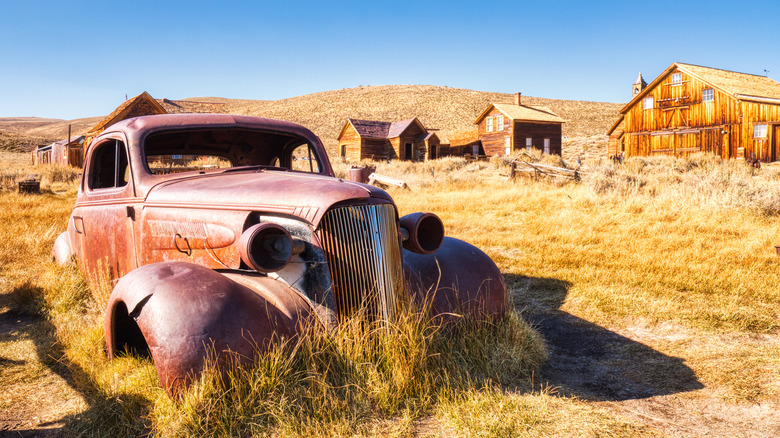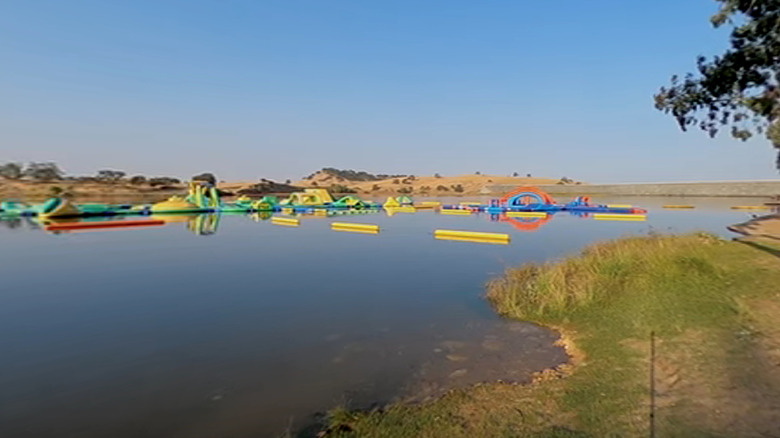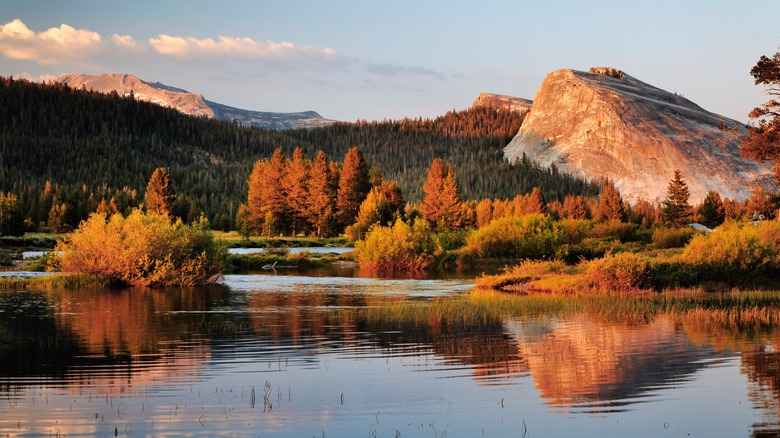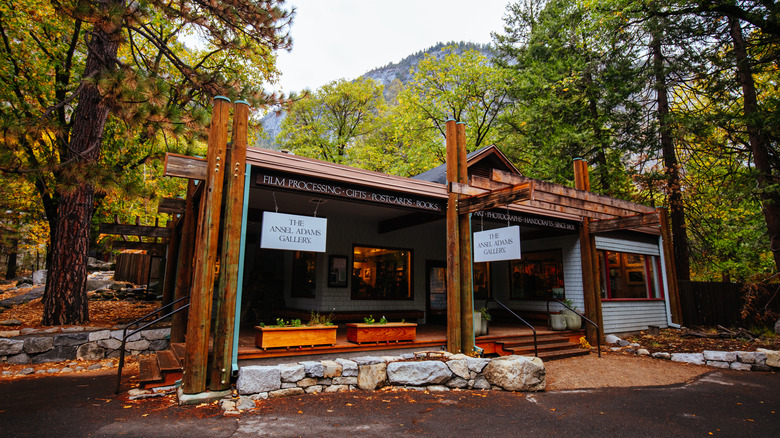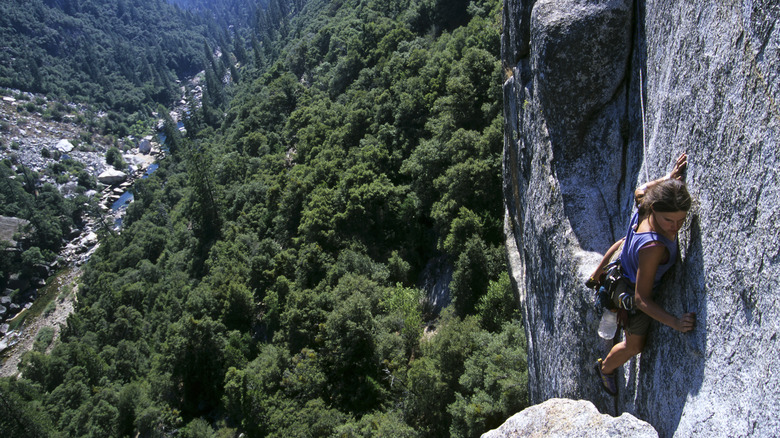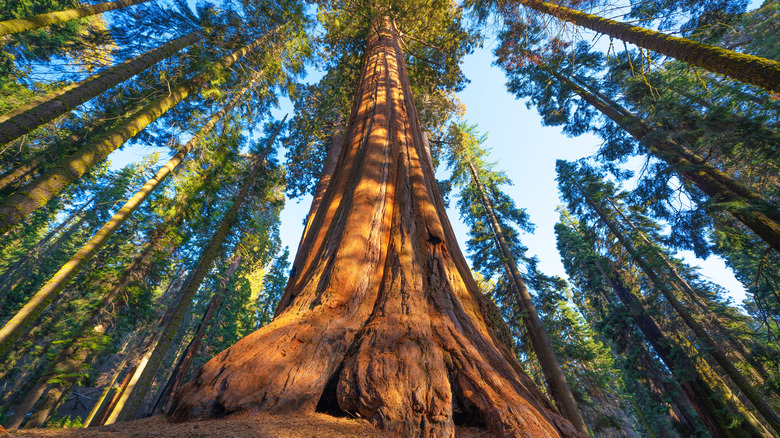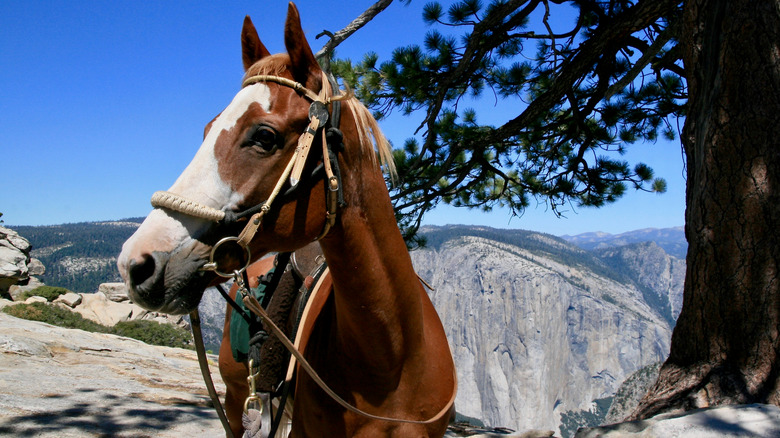15 Family Friendly Activities To Do In Or Near Yosemite National Park
One of the most stunning pieces of nature in the United States, Yosemite National Park is a grand spectacle in every sense. This is a realm of giant granite formations, sharp valleys eroded over eons by glaciers, vast meadows where wildflowers flourish, and forests where mammoth trees, older than this country, reach ever upwards. Yosemite should be on the bucket list of any traveler with even the slightest interest in nature, such is its hypnotic allure. There is so much to see and do here, for any type of traveler, and especially so for adventurers that will revel in the park's varied, dramatic topography.
And yet Yosemite, tucked into the east of California, and not far from its border with Nevada, isn't just the purview of hardened outdoors enthusiasts, the ones with impossibly sinewy arms, bulging calf muscles, and the enviable ability to sleep anywhere (even on the side of a rock face, suspended on a platform). It's also a fantastic place for families to visit, with a range of options open to adults and their kids, both inside the park's boundaries, and also close by. Here are some worthwhile alternatives for families that plan to visit this natural wonder.
Cool off
While Yosemite is a year-round destination, with each season bringing different aspects of the park's beauty to the fore, the warmer months are when it really shines. It's then that all of the terrain is open — the Tioga Road, for instance, that accesses the higher elevations of the park, is closed during the winter — and the weather is certainly more attractive for being outdoors. In addition, this time of year is when the opportunity to enjoy the thrill of some of the waterways presents itself, especially the chance to splash in some of the park's pools and rivers where visitors can cool off after some physical exertion.
There are tons of places to frolic in the water around and in the park, in water that is stunningly clean and crisp. These include outdoor pools that any member of the public can use both at Curry Village and also the Yosemite Valley Lodge, but non-guests will only be able to dip in them for a small fee. Given the glorious natural surroundings, a more rewarding way to get wet is in a natural waterway. Stop by the sandy beaches on stretches of the Merced River, fabulous options for a foray into the depths — other parts of the river are prone to rapid currents and aren't advisable for a swim. Other choices include the Hetch Hetchy Reservoir, part of the Tuolumne River including the Dana Fork, and close to the Vernal Falls. In addition to a swim, families can also boat, raft, and kayak here.
Get up high
While a trip to Yosemite is, for some visitors, akin to ascending to a higher spiritual plane, the park is also a place of great physical altitude. That is apparent, perhaps most strikingly, at Glacier Point, a viewpoint that will have you and the kids feeling like you are standing on the roof of the world. It really is the kind of lookout that feels grander than life, with most of the park highlights open to see in a panorama that no photo can truly do justice. Standing here, visitors will see sweeping vistas of the Half Dome (the iconic rock face that is a shrine for rock climbers), the Yosemite Valley, the park's high country, and Yosemite Falls.
Given its location and elevation, this viewpoint is only open seasonally — the road is often blanketed in snow during the colder months — so this area is typically only accessible from late May until some point in the fall. That said, it is accessible in the winter, but only to cross-country skiers willing to make the 10-mile trip up here. There is a parking lot that gets visitors close to an easy paved walkway leading to the viewpoint, which sits more than 3,000 feet above the base of Yosemite Valley. While the drive from the base of the valley usually takes an hour, it can be longer in the height of summer, and there can be back-ups along the route. But the wait will certainly be worth it.
Splash around an otherworldly waterway
While there are plenty of opportunities in Yosemite to take to the water, from swimming to rafting and more, one aquatic adventure nearby to the park will make families feel as if they have entered an eerie, ghostly realm. The formations of Mono Lake, which is in the Mono Lake Tufa State Natural Reserve, northeast of Yosemite, are truly eerie. Measuring about 65 square miles, it is notable for its jagged towers of minerals, created when the water from freshwater springs rises up through the alkaline content of the lake's water.
These spiky, haunting structures are known as tufa and are made up of calcium carbonate, like the stalagmites and stalactites of caves, and sit atop the waters of a lake that is more than 1 million years in age. Even though the lake is inland, it is salty, meaning that visitors that come here for a swim will find themselves floating effortlessly, a bit like at the Dead Sea in Israel. Salt, here? Yes, that's right, this salt flows in from the streams of the Eastern Sierra mountains and is left behind when the freshwater evaporates, making this lake much saltier than the ocean. Kids will find the sensation of being afloat in the water, bobbing around like an unmoored boat, quite exciting, and adults might find the alkaline liquid restorative.
Take a ride
What kid doesn't like a nice journey on a railroad? That's especially true if it's the type that toot-toots as it chugs along and shoots plumes of steam into the air as it plods on its merry way. The Yosemite Mountain Sugar Pine Railroad has a few different options for a ride through the Sierra National Forest, all of which will appeal to families, with a couple that are especially attractive to adults. The two trains used are both historic, built in 1913 and 1928, with steam engines that really take passengers back in time.
The top-selling ride is the Logger Steam Train, which lasts one hour and winds through forests as narrators detail the area's rich history. The Moonlight Special is a night-time excursion, including live music and dinner before embarkation, a stop at Lewis Creek Canyon with more live performances, and a trip back under the cover of darkness. Other options include jazz music in the forest and a live theatrical performance on a stage surrounded by towering trees.
Watch water fall
One of the most mesmerizing pieces of a visit to Yosemite is the chance to see plenty of impressive cascades, ever-changing, mutating bodies of water that have a hypnotizing effect on anyone watching — the sound of them is also undeniably soothing. While some of the waterfalls exist all year round, springtime is the peak time for seeing them, shortly after the snow pack melts and the resulting run-off feeds the cascades. One of the top sites in Yosemite Falls, which flows from November through July, and is one of the tallest falls on the planet at almost 2,500 feet in all. It is actually made up of three sections, and since it can be seen from many parts of the valley, and is easy to get to from Yosemite Village by foot, and it gets very popular during the peak months.
With a drop of about 2,000 feet, Sentinel Falls is a jigsaw of a number of smaller waterfalls and can be seen while driving along Southside Drive, or for the more active, while wandering along the Upper Yosemite Fall Trail. One of the lesser-known gems is the Chilnualna Falls, almost more than 2,000 in length, and flowing all year, with the most thunderous output in May. It is a secretive waterfall, not all visible at once as it sneakily maneuvers behind rocks and turns as it unfurls, and it can't be driven to, instead requiring visitors to hike to see it, via a trail that is challenging.
Find fossils
A two-hour drive from Yosemite National Park gets travelers to the cool-sounding, Californian town of Chowchilla. It's here that they can visit the Fossil Discovery Center, where plenty of remnants of ancient life are on display. Not exactly a museum, this destination represents a tie-up between the local county and the San Joaquin Valley Paleontology Foundation, and is located on the site of a huge fossil excavation — so it really has a sense of place. The fossils here are from the middle-Pleistocene era, and since there are few sites around the country from that time period, this makes this one extra special.
The center looks both at the paleontology finds and also the excavation area, which is actually in a landfill, placing the discoveries into context and tracing the trajectory from past to present, studying how waste disposal facilities are also shaping the future. It's a fascinating, and unique, set-up, and visitors will be able to look at the valley floor and foothills of the Sierras and see where old rivers carried old bones downstream to their current resting place. Bring the family here and you will see remnants of camels, giant sloths, saber-tooth cats, and replicas of their skeletons, in full size. Guests will marvel at the 13-foot recreation of a Columbian mammoth, and in the onsite laboratory adults and kids can learn about the techniques used to bring the fossils out of the earth and how technicians ensure they don't degrade. Kids can even stop by one area where they can carry out their own dig.
Step back in time
The old structures in the Yosemite History Center take visitors back to another era. Kids will especially love the chance to take a ride on a horse-drawn carriage, maybe under a covered wooden bridge with a high-peaked roof and sturdy timber trusses, and see some old cabins that recall years gone by. The center comprises a collection of old buildings, coupled with signboards that explore their history, their former tenants, and the role they played in the park's evolution.
Exhibits include an old Chinese laundry, and also a place where blacksmith makes actual tools over red-hot coals. These buildings, located originally at a number of spots around the park, were moved to Wawona in the 1950s and 1960s, and are a great way to learn about the past in one, central location. They are also a good place to get a handle on the travails of people that were a part of Yosemite's history, a comprehensive way to look back with the rest of the family.
Visit a ghost town
Not far from Mono Lake, Bodie State Historic Park is also a place that transports visitors into the past. Rather than a recreating a settlement from the past, this destination is the actual, real vestige of a former gold-mining hamlet, a town that once was 10,000 strong until the last residents left more than half a century ago. It's a spare, barren place, a true ghost town, named for a prospector who found a little gold in the terrain near Mono Lake. Upon a larger discovery in 1875 by other diggers, fortune hunters descended on the place, rapidly boosting its number and the stock of houses and businesses to cater to them.
The gold rush eventually died out here, and so did the people interested in pursuing this quickly diminishing opportunity, and slowly residents left. Today, only a section of the town is still standing, and even that is slowly falling apart, left in its natural state for visitors to see and pore over. There is nothing here apart from the buildings, no souvenir shops or food outlets, though there is a small bookstore in the museum, and the lack of commercialism is wonderfully refreshing. While Bodie is accessible to visitors every day of the year, it can only be visited by skis, snowshoes, and snowmobiles in winter.
Have some liquid fun
Less than 90 minutes by car from the park, Splash-n-Dash will have the whole family yelping in joy. This water park in Lake McSwain has slides and other inflatable features that guarantee thrills, spills, and plenty of fun, and is open throughout the summer, as well as select weekends on either side of that season. It's not a traditional water park per se, but more an adventure/obstacle set-up, with various inflatable structures where guests can slide, jump, bounce, tip-toe, and get soaked along the way.
On a warm, sunny day, it's really a joyful destination, full of laughter, revelry, and screams of excitement and trepidation. Among the highlights are the All-In-One Tower, which rises 17 feet off the water and has slides, climbing obstacles, and bits that participants must jump through. Race Trax is a mini-obstacle course out in the water that requires guests to climb, clamber, scramble, hurdle, and test their sense of balance. And on the trampoline, kids can leap and twist in the air, or use it to launch themselves into the water. How fun is that?
Enter wilderness
Most visitors are familiar with the valley part of Yosemite, the area where to find Half Dome, El Capitan, some of the marquee waterfalls, and the visitor's center. But, up Tioga Road, and only open to cars during the warmer climes, the higher elevations of Tuolumne Meadows are a pristine tableau of alpine majesty. This vast area of the Sierra Nevada sits more than 8,500 feet above sea level and feels more untamed and untouched than the main part of the park.
The Tuolumne River is a defining part of the meadows, with a granite base gently winding between craggy peaks and large orbs of rock carved by glaciers. In the spring, large parts of the meadows disappear underwater from all the snowmelt, and much of this water feeds the drinking supply for San Francisco, hundreds of miles away. Granite is the main rock in Tuolumne Meadows, and its tough, rugged form, contrasting with grassy plains and still alpine lakes, creates a tableau of immense natural beauty that a vast majority of visitors to the park don't make the effort to see. But, take the family with you, and you won't regret it.
Picture perfection
A stage for one of the most celebrated American outdoors photographers, the Ansel Adams Gallery, in the park has an unrivaled collection of his works and even offers photography classes aimed at capturing Yosemite in all its beauty. The gallery is where to find a selection of his original prints, exposed and printed by the man himself, and since they are limited in their number — he died in 1984 at the age of 82 — these really are collector's items. They are priced accordingly, ranging from $4,000 to upwards of $60,000, and while they might not be the most suitable gift for the kids in the family, they are certainly worth seeking out for their splendid detail and visual form.
Visitors can learn a little about the art of great photographic composition in the workshops offered. The twice weekly photo walks, which are free but tickets are required, and led by photographers from the gallery, teach guests the ground rules for exposition and how to capture the park's sublime natural contours. For the more serious camera buffs, there are a number of workshops taught over many days, covering topics such as how to master natural photos with an iPhone, composing images as Adams did, and how to use the light and shapes of the Yosemite Valley to maximum effect.
Reach for the stars
There is so much to explore in the park, and visitors thirsting to get beyond the usual experience should sign up for climbing classes with Yosemite Mountaineering School & Guide Service. These aren't just for adults, though, and even children under age 10 can participate. In operation since 1969, the service offers adventures in climbing as well as backpacking, and hiking, and visitors have the option of joining group tours or setting up customized trips. For many, the main attraction is the climbing component, offered in anywhere from a half-day to multi-day adventures.
Trips usually congregate in Half Dome Village or in the high country of Tuolumne Meadows, and for multi-day courses, the skills gradually progress each day. Children 12 and older can enroll without parental supervision, while those that are 10 or 11 need to have an adult there. For children under 10, private tuition is the only option. For other disciplines, the service is a great choice, since the staff know the terrain of the park intimately, and can take care of all the necessary logistics. Sign up, and you and the family can backpack through the wilderness, hike up to the top of Half Dome, and even go cross-country skiing with expert guides.
Walk among giants
One of the most enjoyable things to do in the park is also one of the most low-tech, and simply involves visitors strapping on a pair of comfortable boots and walking. There are hiking trails suitable for visitors of all ages in all corners of the park, as well as many that will challenge even the most ardent hiker. Among the most popular is the Big Trees Loop Trail, which is probably widely traveled because of its ease — it is less than a half mile in length — and takes in a part of the park that is beloved by many visitors, the giant sequoias in the Mariposa Grove, trees that are older than the United States.
A longer walk, the Grizzly Giant Trail Loop, takes in Grizzly Giant, a tree that is estimated to be three millennia in age. The Lower Yosemite Fall Trail passes by the bottom section of Yosemite Falls, the 320-foot drop at the bottom of the cascade, especially powerful and voluminous during the spring and beginning of summer. Visit then, and the kids will shriek in excitement at the footbridge near its bottom, the spray from the falls spraying anyone standing here.
Marvel at the night sky
What goes hand in hand with all this amazing nature? A blessed absence of artificial light, and thanks to the dearth of LED glares and blaring street lights that most of us are used to in the cities, the skies in the park are primed for stargazing. The nearest city lights are miles from here, and the nights here can be very dark, making the stars, when the sky is cloudless, pop out and sparkle like bright baubles strung across the heavens. Visitors that bring along telescopes or binoculars will be greeted by amazing sights, with planets and stars visible.
For a more involved exploration of the night sky, considering joining the crews of amateur astronomers that unbuckle their equipment at Glacier Point on summer Saturdays and set everything up to peer into never-ending space. There are also talks sometimes held by astronomical experts in the Valley and Tuolumne Meadows, a great way to learn about the delights that hang in the local night sky.
Saddle up
A drive west of the park will get travelers from Yosemite to the town of Coulterville, home of Dreamor Unlimited. A ranch that rescues horses and trains them and also places them for adoption, the business has been an equine savior for more than 45 years and has helped to better the lives of hundreds of horses in the process. It also, under its Dreamor Adventures business, offers horse rides in the Sierras, a way for visitors to take in the area's stunning scenery on horseback. Rides start at $80 each, and last 90 minutes, trekking across mountain trails and making the most of the sweeping scenery. Riders of all ages are allowed, though anyone under 18 is required to wear a helmet.
Horses aren't at the ranch just to take visitors out on rides but are also trained for performances and shows, so these are well-trained creatures that listen to instructors that accompany the trips. Guests don't have to have prior experience riding to sign up, and irrespective of their prior ability, the journey among the grand expanses will be something they will never forget. For families, it will be a trip that will make memories that will last a lifetime.
